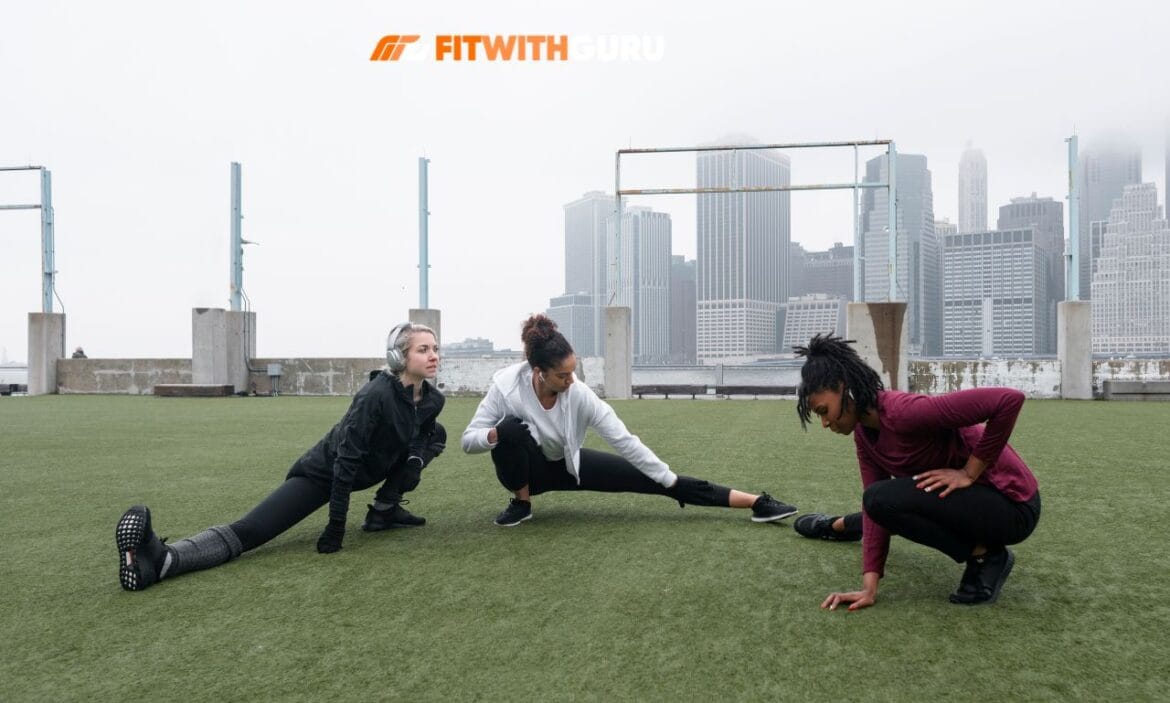Soccer strength training is not just a gym obsession—it’s the fuel behind explosive sprints, powerful tackles, and game-winning shots. If you’re not prioritizing strength in your soccer routine, you’re falling behind.
Strength builds speed. It sharpens agility. And it helps you dominate the pitch—physically and mentally. So let’s break down 5 proven ways to supercharge your power, fast. And not just lift weights for the sake of it—but train like a soccer athlete.
1. Soccer Strength Training Fundamentals: What You Really Need to Know
Soccer isn’t about bulking up like a bodybuilder. It’s about building functional power.
Soccer strength training is designed to:
- Boost acceleration
- Improve lateral quickness
- Enhance core control
- Prevent injuries
- Maintain performance deep into the match
This training focuses on compound movements, explosive actions, and stability—tailored to the fast-paced, dynamic demands of soccer. Forget isolation curls. Think squats, deadlifts, and single-leg work.

2. The Role of Lower Body Power in Soccer Strength Training
Your legs are your engine. When you sprint, shoot, or change direction, it all comes from lower-body strength.
Key muscles in soccer strength trainings include:
| Muscle Group | Why It Matters in Soccer |
| Quads | Driving force in sprints and jumps |
| Hamstrings | Stabilize knee, reduce injury risk |
| Glutes | Power for acceleration and agility |
| Calves | Quick-footed movement and explosive push-offs |
Add exercises like barbell squats, Romanian deadlifts, and Bulgarian split squats to your plan. Build symmetrical strength. That’s what gives you a competitive edge.
3. Soccer Strength Training for Core Stability and Control
Soccer players need to have strong cores in order to twist, turn, and evade opponents. But forget crunches. You need rotational and anti-rotational strength. Add these to your core circuit:
- Pallof presses
- Cable chops
- Hanging leg raises
- Weighted planks
In soccer strength training, your core transfers power from lower to upper body. It keeps you balanced mid-dribble and stable during shots. Ignore it and you’ll feel it—especially late in the second half.
4. Upper Body Strength in Soccer: The Underrated Advantage
Too many players skip upper body work. Big mistake. While you don’t need linebacker mass, soccer strength training for the upper body helps:
- Win shoulder-to-shoulder battles
- Hold off defenders
- Improve throw-ins
- Build overall coordination
Focus on compound lifts:
- Pull-ups
- Bench press
- Dumbbell rows
- Overhead press
And don’t forget explosive push movements like medicine ball throws. They build power, not bulk. Exactly what you need on the pitch.
5. Explosive Power: Plyometrics in Soccer Strength Training
Want to add more pop to your first step? Jump higher for headers? Close gaps faster? Plyometric drills are your answer. These exercises convert strength into raw, explosive power.
Soccer-specific plyometrics include:
- Depth jumps
- Bounding drills
- Lateral box jumps
- Single-leg hops
Aim for 2 sessions per week. Quality over quantity. Each rep should be crisp, quick, and focused on max output.
6. Periodization: Structuring Your Soccer Strength Training Season
Training hard is good. Training smart is better.
Soccer strength training should follow a periodized model:
| Training Phase | Focus Area | Example Workouts |
| Off-Season | Build base strength and power | Heavy lifts, max strength, hypertrophy |
| Pre-Season | Convert strength to explosiveness | Plyometrics, speed drills |
| In-Season | Maintain power, reduce fatigue | Low-volume, high-intensity lifts |
| Post-Season | Recovery + structural balance | Mobility, light weights, deloads |
You don’t need to go full throttle all year. Smart programming keeps you fresh—and dangerous.
7. Injury Prevention in Soccer Strength Training
You can’t help your team from the bench. Smart soccer strength training reduces injury risk by reinforcing joints and improving muscle balance.
Key areas:
- Strengthening hamstrings to protect knees
- Building ankle stability with balance drills
- Activating glutes to support hips
Include mobility work too. Foam roll, stretch, and activate. Make injury prevention part of your training, not an afterthought.
8. Nutrition to Maximize Your Soccer Strength Trainings Gains
Fuel matters. If your nutrition is off, your gains stall. For soccer strength training, prioritize:
- Protein: Muscle repair and growth (1.6–2.2 g/kg body weight)
- Carbs: Training fuel + glycogen refill
- Fats: Hormone support
- Hydration: Essential for power and endurance
Try eating 4–5 balanced meals daily. And time carbs around training for extra energy. Creatine and beta-alanine may also help power output—ask a qualified sports nutritionist.

9. Sample Weekly Soccer Strength Training Program
Here’s a 4-day sample plan to build strength fast:
| Day | Focus | Key Exercises |
| Monday | Lower Body Strength | Squats, RDLs, Step-ups, Calf Raises |
| Tuesday | Upper Body Power | Bench Press, Pull-ups, Rows, Med Ball Throws |
| Thursday | Lower Body Explosive | Box Jumps, Split Squats, Bounds |
| Friday | Core + Stability + Mobility | Pallof Press, Cable Twists, Planks, Hip Flows |
Wednesday and weekends are for active recovery or game play. Consistency beats intensity alone. Train hard, recover smart.
10. Mistakes to Avoid in Soccer Strength Training
Let’s keep it real.
Most players mess up strength training by:
- Skipping leg day (yes, still happens)
- Copying bodybuilding routines
- Not resting enough between sets
- Ignoring form for heavy loads
- Training like it’s CrossFit, not soccer
Remember: Soccer strength training is sport-specific. If it doesn’t translate to the pitch, ditch it. Train like an athlete, not an influencer.
Frequently Asked Questions (FAQs)
What is the best age to start soccer strength training?
Teens aged 13–15 can safely begin under supervision. Start with bodyweight and focus on form. Add resistance as coordination improves. Even youth players benefit from strength foundations.
How often should I do soccer strength training?
2–4 times a week is ideal, depending on your season. Off-season? Go 4x. In season? Scale to 2x with reduced volume. Always prioritize quality over quantity.
Will soccer strength training make me bulky and slow?
Not if done right. Soccer strength training focuses on lean, explosive power—not size. You’ll become more resilient, quick, and nimble. Leave the bodybuilding myths behind.
Do I need gym equipment for soccer strength training?
A gym helps, but you can start with:
- Resistance bands
- Dumbbells
- Medicine balls
- Bodyweight circuits
Some of the most effective drills use minimal gear. What matters is consistency and progression.
Can soccer strength training improve my sprint speed?
Of course. Strength increases the force applied to the ground, which results in faster sprints. Work on your core, hamstrings, and glutes before incorporating plyometric exercises. The result? Quicker acceleration and better top-end speed.
Conclusion: Unlock Your True Potential with Soccer Strength Trainings
Soccer strength training isn’t just an add-on—it’s the core of athletic dominance. You want to win more duels? Shoot harder? Stay injury-free all season? Then strength is your secret weapon.
Stick to the fundamentals. Train with intent. And apply these 5 proven strategies to build real power—fast. When the whistle blows, you’ll feel the difference. And so will your opponents.

